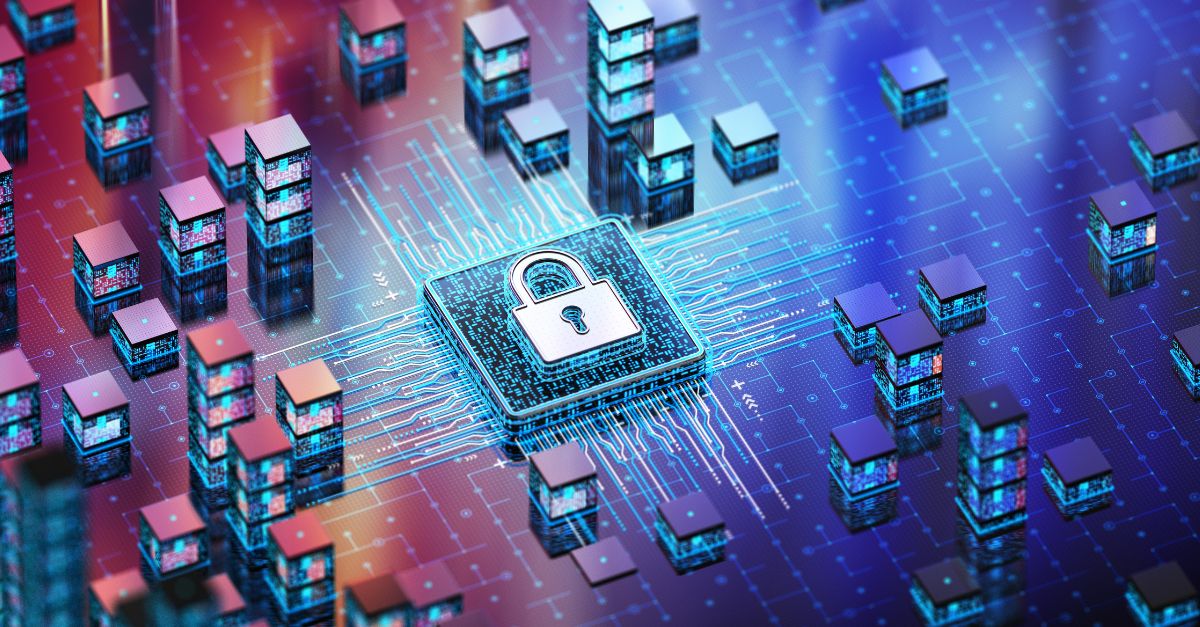Enterprise security is a comprehensive approach designed to protect an organization's digital and physical assets from a wide range of threats. It encompasses a combination of technologies, policies, processes, and practices aimed at safeguarding sensitive information, ensuring business continuity, and maintaining compliance with regulatory standards. Effective enterprise security strategies not only defend against external attacks but also address internal vulnerabilities and human factors, creating a robust defense mechanism that adapts to the evolving threat landscape.

Common Threats Addressed by Enterprise Security
Cybercriminals today are always on the lookout for new ways of evading conventional security measures. It ranges from Distributed Denial of Service attacks that bombard networks with fake traffic to Advanced Persistent Threats that take months to materialize. Effective enterprise security identifies and eliminates threats at all stages, thus preventing the spread of the attacks. Here are five common threats that strategic defenses usually counter:
Phishing Campaigns
Phishing remains the most prevalent attack type, involving deception to obtain users' passwords or lure them into clicking malicious links. Even vigilant employees can be deceived by seemingly legitimate messages. Enterprise security solutions mitigate phishing risks through email filtering, link scanning, and end-user education, significantly reducing the success rates of such attacks.
Ransomware Infections
Ransomware encrypts critical data or systems and demands cryptocurrency payments for decryption. Attackers often exploit unpatched software or spear-phishing emails to gain entry. Robust endpoint protection, strong backups, and network segmentation are essential in preventing ransomware from spreading and minimizing its impact on the organization.
Insider Threats
Not all threats originate from external hackers; dissatisfied or careless employees can also cause security breaches, posing insider threats. Implementing strict access controls and monitoring user activities are key to mitigating insider threats. Any unusual behavior, such as unauthorized data downloads, should trigger alerts and prompt investigations, ensuring that potential insider threats are identified and addressed promptly.
Advanced Persistent Threats (APTs)
APTs are sophisticated attacks carried out by highly skilled attackers who patiently infiltrate systems over time while avoiding detection. These attackers often exploit zero-day vulnerabilities. An effective enterprise security model incorporating endpoint assessment, threat intelligence, and Security Information and Event Management (SIEM) logs can detect and mitigate APTs more effectively.
Distributed Denial-of-Service (DDoS)
DDoS attacks overwhelm servers or networks with fake traffic, blocking legitimate access to services. Attackers may demand ransom payments to stop the attack. Cloud-based traffic filtering and load balancing services are crucial components of enterprise security against DDoS attacks, helping to mitigate the impact and maintain service availability.
Enterprise Security Architecture
A robust security framework integrates policies, processes, and technology into a cohesive and comprehensive structure. Each layer, from the outer perimeter defense to user authentication, is meticulously designed to eliminate any potential gaps that attackers could exploit. A well-architected security system ensures that if one barrier is breached, additional layers are in place to thwart further intrusion. The following elements are crucial for constructing a resilient enterprise security architecture.
Perimeter Defenses
Firewalls, intrusion prevention systems, and secure gateways form the outermost layer of network protection. These tools monitor both incoming and outgoing traffic, enabling them to detect and block malicious packets. Serving as the first line of defense, they prevent unauthorized access from penetrating the corporate network. A properly configured perimeter defense can repel the majority of intrusion attempts on a daily basis.
Zero-Trust Segmentation
Zero-trust models operate on the principle that no entity, whether internal or external, should be inherently trusted. Every request must be authenticated, authorized, and encrypted, thereby minimizing the potential damage an attacker can cause even if they gain access to a single node. Micro-segmentation is a key component of integrating zero-trust principles into enterprise endpoint security. It ensures that unauthorized access is restricted to the smallest possible segment of the network, enhancing overall security.
Data-Centric Security
Data-centric security architectures prioritize the classification and encryption of data at all stages of storage and transit. In this model, your most valuable assets are always protected by multiple layers of security. This approach aligns with modern enterprise security solutions that emphasize compliance, privacy, and readiness for data breaches.
Threat Intelligence Integration
Incorporating global threat intelligence into your security layers at the right time significantly enhances your detection capabilities. By leveraging threat intelligence, solutions can quickly identify and blacklist suspicious IP addresses or specific threat signatures. Integrating intelligence feeds into SIEM, IDPS, and firewalls provides a unified view of potential threats, enabling more effective detection and response to incidents.
How Does Enterprise Security Work?
Enterprise security is not just a single tool but a system of interrelated protection measures. It integrates technological measures, policies, and user awareness to make it harder for threats to occur or spread. Every level of protection, from endpoints to networks, is designed to challenge attackers and prevent them from maneuvering unnoticed.
Continuous Monitoring
Security systems operate around the clock to monitor network traffic, logins, and file access events. Anomalies, such as an increase in failed login attempts, trigger alerts. Real-time information enables security teams to stop infiltration attempts at the earliest stage, supporting best enterprise security practices.
Automated Response
Automated scripts or playbooks can isolate affected devices, disable user accounts, or block malicious domains when a threat is confirmed. This real-time reaction helps prevent damage from fast-moving attacks like ransomware. Combined with enterprise endpoint security, automated response quickly closes gaps.
Privileged Access Management
High-level privileges are attractive to hackers because they offer significant value. These high-risk accounts can be controlled with additional measures like temporary credentials and multi-factor approval to prevent unauthorized operations. A strong enterprise security program ensures that certain operations cannot be executed without confirmation.
Threat Hunting
Proactive threat hunting involves forensic analysis and deep inspection to find hidden attackers who leave minimal traces. Threat hunters analyze system logs, memory, and user activity to detect deviations from the norm. This helps organizations detect Advanced Persistent Threats (APTs) and prevent them from infiltrating the network.
Vulnerability Scanning & Patching
Regular scans identify outdated software and improper configurations, providing a plan for fixes. Automated patch deployment quickly seals known vulnerabilities before attackers can exploit them. This core principle of enterprise security significantly reduces preventable incidents.
Logging & Auditing
Detailed logs record user activities, system modifications, and security incidents for investigative analysis. Examining these logs reveals patterns that may indicate threats or compliance breaches. Clear and easily searchable records are essential for thorough incident investigation.
Benefits of Enterprise Security
The benefits of enterprise security extend beyond threat prevention to include managing day-to-day operations and boosting investor confidence. A comprehensive defense strategy forms the basis for long-term development.
- Reduced Downtime: Strong defenses block most threats before they cause severe damage to IT systems. This ensures employee productivity and prevents service interruptions for customers, building the stability of the organization's brand and products.
- Controlled Costs: Incidents are costly, involving forensic cleanup and legal penalties. Efficient security solutions reduce incident frequency and severity, lowering long-term costs. Stable security postures can also lead to lower cyber insurance premiums.
- Strengthened Brand Reputation: Customers and partners prefer organizations with robust privacy measures. Compliance with regulations and strong endpoint protection enhance brand reputation, providing a significant competitive advantage.
- Accelerated Innovation: Secure systems enable teams to confidently adopt new technologies like cloud computing or IoT. Security frameworks protect organizations from worst-case scenarios, allowing developers and innovators to focus on adding value through safe experimentation.
- Enhanced User Confidence: Internally, employees feel more comfortable working within secure networks and applications. Externally, customers and vendors expect their information to remain private. Shared confidence fosters better relationships and smoother operations.
Challenges in Implementing Enterprise Security
Several challenges can affect the development and sustenance of enterprise security. Budget constraints, legacy systems, and skills shortages can threaten even the most carefully planned strategies.
Funding Limitations
Hiring new technologies or retaining talented employees can be costly. Decision-makers may not fully appreciate cyber risks or prioritize them. Demonstrating the value of enterprise security often involves showing how strong protection saves money by preventing costly attacks.
Skills Gaps
The lack of cybersecurity professionals can lead organizations to rely on smaller or less skilled teams. Activities like threat hunting and forensics can be challenging for such teams. These gaps can be filled by outsourcing security functions to managed service providers or by training the workforce.
Siloed Environments
Hybrid environments are difficult to manage and secure due to the lack of a unified security policy and threat intelligence. Remote teams may struggle to share logs or incident indicators, creating blind spots. Promoting cross-functional collaboration and implementing integrated security solutions can minimize these issues.
Legacy Infrastructure
Traditional systems may lack modern security features or vendor support. Upgrading them can cause operational problems or require significant re-engineering. Balancing business continuity with security modernization remains a recurring challenge for large companies.
Rapidly Evolving Threats
Hackers continuously exploit new vulnerabilities, such as zero-day exploits or AI-based attacks, to bypass protection measures. Static solutions are no longer sufficient. Enterprises need continuous threat intelligence updates and an agile strategy to protect endpoint security.
Conclusion
Enterprise security has evolved from a mere technical safeguard to a strategic enabler in the digital age. Organizations that embrace this paradigm shift can confidently pursue digital transformation, build customer and partner trust, maintain regulatory compliance, and achieve a competitive advantage. Moving forward, it is essential to view security not as a cost center, but as a business imperative that enables growth while effectively managing risk in an increasingly complex threat environment.
Frequently Asked Questions
Typical security spending ranges 4-10% of IT budget, depending on industry and risk profile.
Multi-factor authentication provides immediate risk reduction for all organizations.
Formal reviews should occur annually, with continuous updates for emerging threats.
Yes, through cloud-based security services and managed security providers.
CISSP for professionals, ISO 27001 for organizations demonstrate security maturity.





